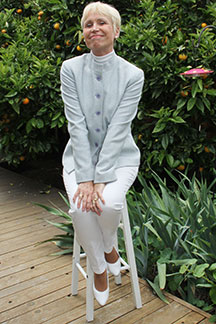Retired US Air Force Colonel Gail Halvorsen was a First Lieutenant when he was told to help airlift flour, dried eggs, dried potatoes, dried milk and coal into West Berlin during the Berlin Blockade of 1948/49. The purpose of the mission was to keep West Berlin’s 2.2 million population from starvation. The Berlin Airlift was the biggest humanitarian aid mission in history, and Colonel Halvorsen remains one of its unforgotten heroes. The children of Berlin called him Uncle Wiggly Wings.
Why was Berlin blockaded?
Following Word War II, Germany was divided into four zones. American, British, French and Soviet forces occupied the country. Berlin, the capital, was also split into four sectors, and West Berlin ended up 100 miles inside the Soviet occupation zone. http://www.walled-in-berlin.com/j-elke-ertle/allied-control-council-governs-germany/ By 1948, the Soviets tried to get the three Western occupation powers to withdraw from Berlin. http://www.walled-in-berlin.com/j-elke-ertle/berlin-blockade-and-the-cold-war/ To hasten the process, the Soviets blocked all land and water access to West Berlin. Now, trucks, trains and barges were no longer able to supply West Berlin with food and coal. In an unprecedented logistical feat, the three Western Allies decided to supply West Berlin from the air in what is commonly known as the Berlin Airlift. http://www.walled-in-berlin.com/j-elke-ertle/berlin-airlift-unprecedented-feat/ For eleven months, supply planes landed every few minutes at West Berlin’s Tempelhof Airport. On 12 May 1949, the Soviet Union lifted the blockade.
How Gail Halvorsen became a Berlin Airlift hero
In a 2007 essay, the now 95-year-old Colonel Gail Halvorsen explains why the children of Berlin knew him as “Uncle Wiggly Wings.” In 1948, the beginning of the blockade, the U.S. Air Force ordered him to fly life-sustaining essentials into West Berlin. Day and night he flew a C-54 Skymaster filled with staples into West Berlin. He flew in thunderstorms, fog, ice and snow. Off duty, he slept in the loft of a farmer’s old barn. From his cockpit Gail Halvorsen could see the moonscape that had once been the grand capital of Germany. Many buildings were mere shells. Rubble everywhere. http://www.walled-in-berlin.com/j-elke-ertle/legacy-of-rubble-women/
One day in July, when he was off duty, Colonel Gail Halvorsen walked to the end of the runway to film aircraft landings. A group of about 30 children stood behind the barbed wire fence. He walked over to the children, fully expecting them to beg for sweets as he had previously experienced in other parts of the world. But these children didn’t beg. They appeared so grateful for the flour he delivered that they didn’t think it proper to ask for more. Impressed, Gail Halvorsen reached into his pocket for some gum. But all he found were two sticks of Wrigley’s Doublemint – two sticks for 30 children. He broke them in half and passed them through the barbed wire. Now the children surprised him even more. They broke the gum into as many pieces as possible and shared them. They then tore the wrappers into pieces as well and handed them to the children who had gone without gum. The latter stuck their noses into the wrappers to savor the minty smell. Without fighting over the gum, every little face was lit with glee. Colonel Gail Halvorsen was so moved by the children’s restraint that he promised to drop more gum the next day so that every child could enjoy a piece. When the children asked how they would recognize his plane, he said he would wiggle the aircraft’s wings.

Then First Lieutenant Gail Halvorsen surrounded by Berlin children, photo courtesy of archive.defense.gov
The following day, Gail Halvorsen made good on his promise. He fashioned three little parachutes from handkerchiefs, attached packages of sweets to them and dropped the small canopies from his plane just prior to landing. From then on he continued to drop candy from his plane, even in the Soviet sector. His generous deed caught on. By the end of the Berlin Airlift, Colonel Gail Halvorsen along with many other pilots, had dropped over 20 tons of chocolate, gum and candy over Berlin. In 1974, Uncle Wiggly Wings was awarded the German Federal Cross of Merit in Berlin for his role in the Berlin Airlift.
For a sneak peek at the first 20+ pages of my memoir, Walled-In: A West Berlin Girl’s Journey to Freedom, click “Download a free excerpt” on my home page and feel free to follow my blog about anything German: historic and current events, people, places and food.
Walled-In is my story of growing up in Berlin during the Cold War. Juxtaposing the events that engulfed Berlin during the Berlin Blockade, the Berlin Airlift, the Berlin Wall and Kennedy’s Berlin visit with the struggle against my equally insurmountable parental walls, Walled-In is about freedom vs. conformity, conflict vs. harmony, domination vs. submission, loyalty vs. betrayal.















